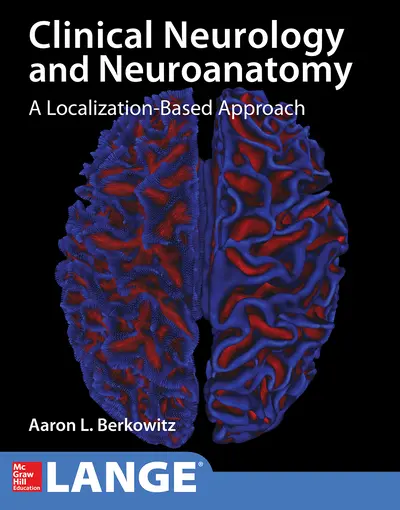My Account Details

ISBN10: 1259834395 | ISBN13: 9781259834394

Step 1 . Download Adobe Digital Editions to your PC or Mac desktop/laptop.
Step 2. Register and authorize your Adobe ID (optional). To access your eBook on multiple devices, first create an Adobe ID at account.adobe.com. Then, open Adobe Digital Editions, go to the Help menu, and select "Authorize Computer" to link your Adobe ID.
Step 3. Open Your eBook. Use Adobe Digital Editions to open the file. If the eBook doesn’t open, contact customer service for assistance.
An engagingly written text that bridges the gap between neuroanatomy and clinical neurology A Doody’s Core Title for 2021! “A wonderfully readable, concise, but by no means superficial book that fits well in the current pedagogic environment.” From the Foreword by Allan H. Ropper, MD Clinical Neurology and Neuroanatomy delivers a clear, logical discussion of the complex relationship between neuroanatomical structure and function and neurologic disease. Written in a clear, concise style, this unique text offers a concise overview of fundamental neuroanatomy and the clinical localization principles necessary to diagnose and treat patients with neurologic diseases and disorders. Unlike other neurology textbooks that either focus on neuroanatomy or clinical neurology, Clinical Neurology and Neuroanatomy integrates the two in manner which simulates the way neurologists learn, teach, and think. Clinical Neurology and Neuroanatomy is divided into two main sections. In Part 1, clinically relevant neuroanatomy is presented in clinical context in order to provide a framework for neurologic localization and differential diagnosis. The diseases mentioned in localization-based discussions of differential diagnosis in Part 1 are then discussed in clinical detail with respect to their diagnosis and management in Part 2. Part 1 can therefore be consulted for a neuroanatomical localization-based approach to symptom evaluation, and Part 2 for the clinical features, diagnosis, and management of neurologic diseases. FEATURES • A clear, concise approach to explaining the complex relationship between neuroanatomical structure and function and neurologic disease • Numerous full-color illustrations and high resolution MRI and CT scans • Explanatory tables outline the clinical features, characteristics, and differential diagnosis of neurologic diseases and disorders
Need support? We're here to help - Get real-world support and resources every step of the way.